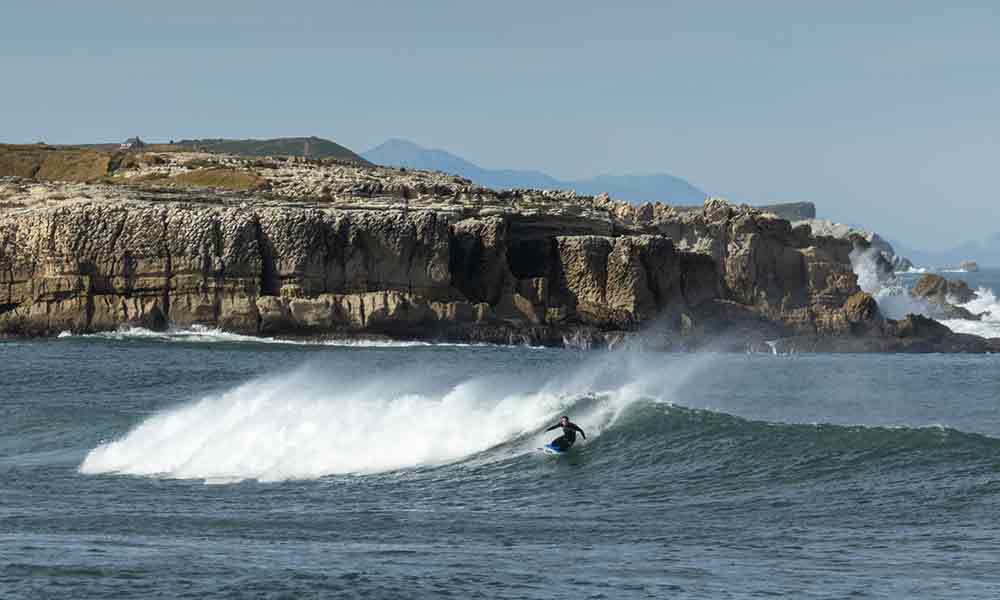The popularity of surfing has given rise to a number of different board sports and watersports, it even influenced skateboarding!
One of those sports is known as kneeboarding, but what is kneeboarding, who invented it, how difficult is it, and what sort of equipment do you need?
We’ll answer all of those questions and more in this guide to kneeboarding.
What is Kneeboarding?
Kneeboarding is performed on a surf-style board, with the rider being towed along the water at a planing speed.
As the name suggests, kneeboard surfing is performed on the knees, with a Velcro strap wrapped around their thighs to secure them to the board.
The rider holds onto a tow rope that is often attached to a motorboat.
Kneeboard surfing is generally much easier to learn than surfing.
The kneeboard rider doesn’t need to generate speed themselves and as they are kneeling and not standing, it’s easier for them to stay in control.
Who Invented Kneeboarding?
The history books report that kneeboarding was invented in Southern California, the birthplace of many great board sports and watersports.
It is said to have been invented as an alternative to wakeboarding and water skiing, giving riders a way to tackle flat waves.
The first kneeboards were commercially produced in the 1970s and although they weren’t very popular in those early years, that changed by the 1980s and today this water sport is more popular than ever.
One of the first commercial boards was the Knee Ski, which was made from molded fiberglass and created by a skier named Mike Murphy and a surfer named Bud Hulst.
The Glide Slide was developed shortly after that by John Taylor (an employee of Knee Ski), and it quickly became one of the most popular boards in the sport.
In the 1980s, the International Kneeboard Association (IKA) was founded by Roland Hillier.
It established the official rules and regulations of this water sport and led to the creation of major events in both cableway towing and boat towing.
Roland Hillier would later write and publish the first-ever book on kneeboarding, Kneeboarding A – Z, and he also helped the sport to get media attention.
How to Kneeboard
Although the kneeboard is often described as a “surf style board”, that doesn’t mean you can just start kneeling on your surfboard.
Kneeboards tend to be shorter and rounder.
They also have molds for your knees and legs, along with an adjustable strap that you tie around your thighs.
You can buy a kneeboard for a few hundred bucks and there are several major manufacturers that make them.
However, you’ll need much more than a simple board if you want to try kneeboarding for yourself.
You’ll also need a tow rope, as well as someone who can tow you behind a boat.
You should also buy a lifejacket for extra protection.
Kneeboarding Versus Surfing
As far as the learning curve is concerned, kneeboarding is a much easier sport than surfing.
You have much more stability and the use of tow ropes means you don’t need big waves to generate speed.
However, if you want to surf then you only need a surfboard and optimal conditions.
You can buy a funboard or foamie for a few hundred bucks and head to the coast.
You’ll struggle to stay on the board if you’re surfing for the first time, but with a lot of wipeouts, paddling, and patience, you will get there eventually.
With kneeboarding and other tow sports, you’ll need to rent a boat and ensure that there’s someone to sail it.
Of course, you don’t need a big boat, and a simple motorboat should suffice, but it’s still an extra step and—potentially—an extra expense.
Kneeboard Surfing Tricks
Kneeboarding is a relatively safe sport, but falls occur, injuries happen, and caution is still advised.
Before you start attempting tricks and tackling big waves, you need to make sure you actually know what you’re doing and have all the basics covered.
At that point, you can start thinking about the following kneeboarding tricks:
- Side Slides: Also known as butter slides, this kneeboarding trick is performed by turning the board horizontal to slide along the surface of the water. You’ll need to lean back slightly though, lest the boat pull you over.
- The Air or Ollie: Similar to an ollie in skateboarding, this trick requires you to jump/hop without using the wave. Pull the tow rope to make it tense while pressing down with your knees. To jump, simply move your knees upward.
- Jumping the Wake: A kneeboarding trick that entails jumping from the outer edge of the boat’s wake into the middle of it. Simply allow yourself to leave the wake and then cut back quickly, leaning back as you do so. When you reach the boundary, you will be propelled upward and can land inside the wake.
Is Knee Boarding A Sport?
Kneeboarding is a sport and there are organized competitions. Here is a video of a kneeboarding competition in Huntington Beach, CA.
Kneeboarding Summary
Kneeboarding has a much easier learning curve than surfing and wakeboarding.
It’s an incredibly fun sport and it’s hard not to smile as you break in and out of the wake, gain some air, and pull off all kinds of tricks.
With the rubber pad on your knees, the strap over your thighs, and the support of a buoyant board, it’s a very accessible sport that everyone can—and should—try for themselves.







